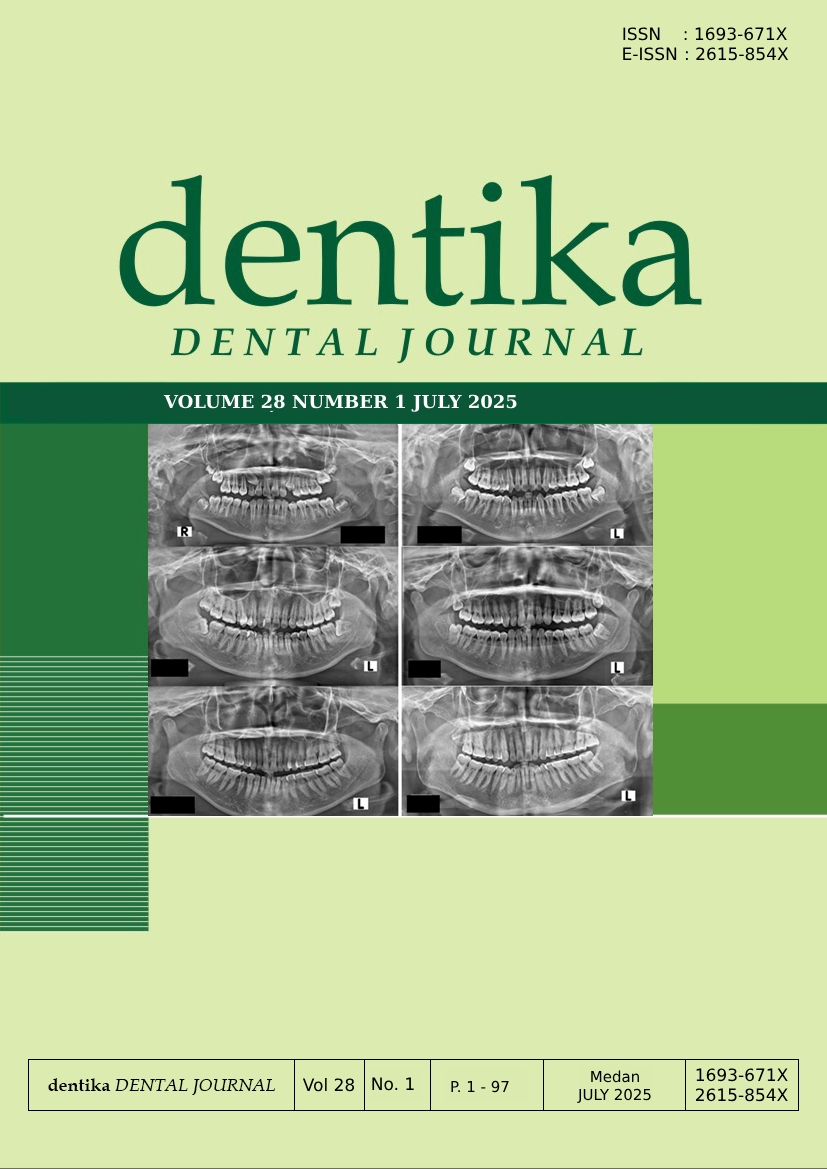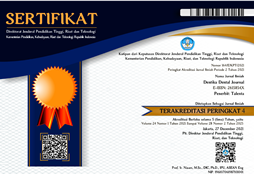The Effect of 2% Nanochitosan Oligosaccharide Gel as Cavity Cleanser on Dentin Resin Attachment to Ethanol-Water and Acetone Solvent Adhesives Using Dry and Wet Bonding Techniques
DOI:
https://doi.org/10.32734/dentika.v28i1.19908Keywords:
Cavity cleanser, Chitosan, Microleakage, Ethanol, Acetone, Wet-Bonding, Dry-BondingAbstract
Cavity cleanser is characterized by low toxicity, biocompatible, and antibacterial properties. It has the ability to remove the smear layer and inhibit the matrix metalloproteinase enzyme. Therefore, this study aimed to determine the effect of 2% nano-chitosan oligosaccharide gel as a cavity cleanser on dentin resin attachment using ethanol-water and acetone solvent adhesives with dry and wet-bonding techniques. A total of 48 upper premolars with class I restoration were divided into eight treatment groups. Four groups were treated with 2% nano-chitosan oligosaccharide gel combined with ethanol-water or acetone solvent adhesives, while the other four received 2% chlorhexidine digluconate with the same adhesives. In the process, both bonding techniques were applied. Microleakage was assessed by measuring the penetration of 2% methylene blue dye into samples cut mesiodistally through a stereomicroscope with 1x magnification and given a score of 0-3. The results showed that the 2% oligosaccharide nano-chitosan gel group with ethanol-water solvent adhesive using the wet-bonding technique (0.33 ± 0.516) had the lowest microleakage score. Additionally, the Kruskal-Wallis test presented significant differences between the four treatment groups (p<0.05).
Downloads

Downloads
Published
How to Cite
Issue
Section
License
Copyright (c) 2025 Trimurni Abidin, Yemima Greisheila Girsang, Putrimahsuci Ramadhani Sihotang

This work is licensed under a Creative Commons Attribution-ShareAlike 4.0 International License.

















